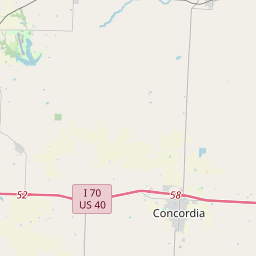Civil War Casualties
Historical marker location:






April 12, 1861: The Civil War begins with the Confederate attack on Fort Sumter, located in South Carolina's Charleston Harbor.
April 15, 1861: President Abraham Lincoln issues a call for 75,000 volunteers to serve in the Union Army to suppress the rebellion.
May 24, 1861: The first major land battle, known as the First Battle of Bull Run (or First Battle of Manassas), takes place in Virginia. It ends in Confederate victory.
September 17, 1862: The Battle of Antietam in Maryland becomes the bloodiest single-day battle in American history, with heavy casualties on both sides. The Union forces, commanded by General George McClellan, manage to halt Confederate General Robert E. Lee's advance into Union territory.
January 1, 1863: President Lincoln issues the Emancipation Proclamation, declaring that all slaves in Confederate-held territories are to be set free. However, the proclamation does not immediately free all slaves in the United States.
July 1-3, 1863: The Battle of Gettysburg in Pennsylvania takes place, resulting in a significant Union victory and inflicting heavy casualties on Confederate forces. It marks a turning point in the war.
November 19, 1863: President Lincoln delivers the Gettysburg Address, emphasizing the principles of liberty, equality, and the preservation of the Union.
April 9, 1865: General Robert E. Lee surrenders to Union General Ulysses S. Grant at Appomattox Court House in Virginia, effectively ending the Civil War.
April 14, 1865: President Lincoln is assassinated by John Wilkes Booth while attending a play at Ford's Theatre in Washington, D.C.
May 10, 1865: Confederate President Jefferson Davis is captured, signaling the collapse of the Confederate government.
December 6, 1865: The Thirteenth Amendment to the United States Constitution is ratified, officially abolishing slavery throughout the country.
While this timeline provides an overview of key events, it is important to note that the Civil War spanned over four years, from 1861 to 1865, and encompassed numerous battles, campaigns, and political developments that shaped the course of American history.
The "Show-Me State" is Missouri's official nickname and is believed to have originated from a speech given by Congressman Willard Duncan Vandiver in 1899. He said, "I come from a state that raises corn and cotton and cockleburs and Democrats, and frothy eloquence neither convinces nor satisfies me. I am from Missouri. You have got to show me."
The county was named after the Marquis de Lafayette, a French military officer and key figure in the American Revolutionary War. Lafayette County quickly grew in population, primarily due to the establishment of the Santa Fe Trail, which passed through the county from 1821 until the 1870s. The trail brought trade and commerce to the area, resulting in the growth of small towns and businesses along its route.
During the Civil War, Lafayette County became a significant battleground. The county was split between Confederate and Union sympathizers, leading to fierce conflicts. Several important battles took place within the county, most notably the Battle of Lexington in September 1861. The county saw occupation by both Confederate and Union forces at different points during the war, leaving a lasting impact on the local community.
After the Civil War, Lafayette County experienced a period of rebuilding and growth. The railroad arrived in the late 19th century, further enhancing the county's economic development. Today, Lafayette County continues to thrive, with a diverse economy that includes agriculture, manufacturing, and services. The county's historical significance is celebrated through the preservation of numerous historic sites and landmarks, ensuring that its rich history remains an integral part of its identity.
Lafayette County Timeline
This timeline provides a concise overview of the key events in the history of Lafayette County, Missouri.
- 1820: Lafayette County established as one of the original counties of Missouri.
- 1827: Lexington, the county seat, founded.
- 1829: Pioneer George Caleb Leonard settles near present-day Odessa.
- 1831: A cholera epidemic sweeps through the county, causing many deaths.
- 1835: The county courthouse is constructed in Lexington.
- 1855: Waverly becomes the second county seat.
- 1861-1865: Lafayette County heavily impacted by the American Civil War.
- 1881: The Lee-Johnson feud, a political and personal conflict, results in multiple deaths.
- 1893: The Chicago & Alton Railroad is completed, boosting the local economy.
- 1927: The Kansas City Power and Light Plant in Lexington begins operation.
- 1961: The construction of Truman Reservoir is completed, providing recreational opportunities.
- 2003: The Confederate Memorial State Historic Site opens in Higginsville.
- 2010: Lafayette County's population reaches approximately 33,381.